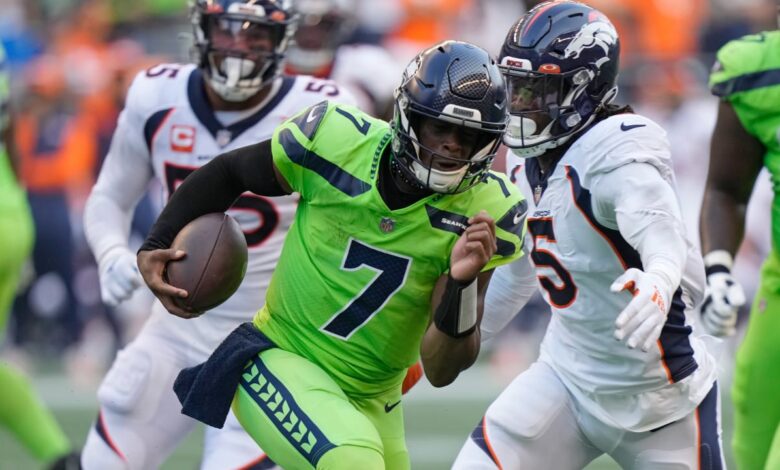NFL Health and Safety Fact Sheet

EQUIPMENT, DATA AND INNOVATION
The NFL is championing new developments in engineering, biomechanics and material science to better understand the cause of injuries and protect against them. The league collaborates with the NFLPA and the world’s foremost engineers and scientists as advisors.
LEVERAGING DATA
Data is at the heart of the NFL’s decisions about player health and safety.
» Injury Data: Throughout the year, comprehensive NFL player injury data is compiled and analyzed by IQVIA, an independent, third-party company that provides results to the league, the NFLPA and medical and football committees. The NFL then shares this data publicly each year. Guided by the experts at IQVIA, NFL medical committee members identify trends in how, where and when injuries happen, and assess how protocols and rules changes affect player safety. During the 2022 season, injuries were down 5.6% overall, including a 6.2% decrease for the preseason and 5.4% for the regular season.
» Electronic Medical Records: Every club’s medical staff has access to its players’ complete medical records via the Electronic Medical Record (EMR) system. Each player’s medical records follows him from one club to another. Players may access their records via the EMR system. Third party epidemiologists and experts analyze data extracted from the ERM system to help the league make data-driven decisions on rules changes and permissible techniques used in play.
» Comprehensive Video Review: Each season, biomechanical engineers complete a comprehensive video review of all reported concussions sustained in NFL games. The league shares the data with helmet manufacturers, designers, innovators, entrepreneurs, universities and others to stimulate new designs for protective equipment.
» Mouthguard Sensors to Measure On-Field Head Impacts: In 2019, the NFL introduced a novel program in which NFL players wore mouthguards retrofitted with high-tech sensors designed to collect kinematic data, including impact speed, direction, force, location and severity. As of 2023, this program has expanded to include eight Division I Football Bowl Subdivision universities, with the University of Florida, University of Georgia, University of Pittsburgh and Vanderbilt University joining the program alongside the four initial participants: the University of Alabama, University of North Carolina at Chapel Hill, University of Washington, and the University of Wisconsin. Insights gleaned from the data collected help inform the NFL’s approach to injury reduction and decrease head impacts overall.
» Taking Data to the Next Level: In 2019, the NFL partnered with Amazon Web Services to transform player health and safety using cloud computing, machine learning and artificial intelligence. The NFL and AWS are developing tools to generate better insights into injuries, specifically the impact of game rules, equipment, and rehabilitation and recovery strategies. One of the partnership’s primary goals is building the capacity to predict injuries before they occur.
– The NFL and AWS are building the Digital Athlete, a virtual representation of an NFL player using actual NFL games and data that can run infinite in-game scenarios to understand the impact on player health and safety and ultimately attempt to predict and prevent injuries.
– The NFL and AWS continue to encourage innovation with data challenges, incentivizing novel approaches that can provide more information regarding player health and safety. In 2022, the NFL and AWS awarded $100,000 to the winners of its artificial intelligence competition, which challenged data scientists to teach computers to automatically detect players involved in head impacts from NFL game footage. In 2023, the NFL and AWS awarded $100,000 to the top finishers of a competition in which data scientists from around the world built machine learning and computer vision programs to better measure and analyze the timing, duration and frequency of player contact during NFL games – an effort to identify which types of plays cause unnecessary contact, identify the positions that are more prone to injuries, and develop potential rules changes.
USING DATA TO DRIVE RULES CHANGES
The NFL improves player safety by taking a data-driven approach to eliminating potentially dangerous tactics and reducing the risk of injuries. Over the past decade, these include changes that protect “defenseless” players and penalize dangerous techniques and other plays, such as using the helmet as part of a bull rush. Changes for the 2023 season include:
» Fair Catch on Kickoff: The rule now puts ball in play at the receiving team’s 25-yard line if there is a fair catch on a free kick (kickoff and safety kick) behind the receiving team’s 25-yard line, which should reduce injuries while not changing the fundamentals of the kickoff itself.
» Impermissible Use of the Helmet: Expanded the Impermissible Use of the Helmet, making it a foul for players to use their helmet to “butt, ram, spear” or make forcible contact to opponents’ head or neck area in any way. This builds on the existing Impermissible Use of the Helmet rules which prohibits a player from lowering his head to initiate and make contact with his helmet against an opponent.
As the NFL learns more about player health and safety, the league evaluates and changes rules to evolve the game and try to improve protections for players. All changes made since 2002 can be reviewed here.
Source link

